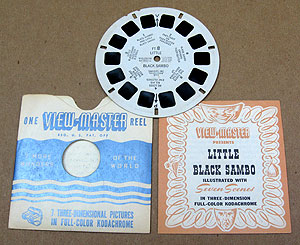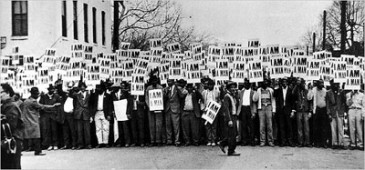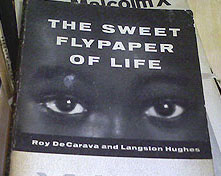The images spoke their own evilness. Paul Robeson – one of the smartest and most talented men in the world – toting a bale of cotton, staggering out of a bar singing “Ol’ Man River” in the 1936 musical “Show Boat.” Amos ‘n Andy, talking funny and acting stupid.
Black male bodies hanging from a tree, lynched. An Aunt Jemima syrup dispenser. The battered and swollen face of Emmett Till. Segregation signs: NO Dogs, Mexicans, Negroes.

I didn’t see them at auction (these rarely come up at the auctions I go to) but at an exhibit at the International Center of Photography in New York. The exhibit focused on images depicting black people as something less (and mainstream as something better), a photo-collage that permeated the culture for decades.
The exhibit started with a clip from “Showboat,” and continued through and past the civil rights movement when leaders – including Dr. Martin Luther King Jr. – and others learned to use print and broadcast media to get their messages out. Most importantly, they used them to disseminate positive images of us.
It was riveting in its breadth, its artifacts and the amount of information it packed into the story it told. You can find much of this in other forms, but it was good to have it all packaged in rooms at the photography center. It was a forceful in-your-face-representation of how one can visually – and sometimes subliminally – make a people invisible and insignificant.
What was uplifting about the exhibit was how black people and their supporters either used traditional media or created their own ways of telling the story of who they really were: non-monolithic; eclectic in their views and appearances; their wants pararelling those of everyone else, and “them” not so different from the rest of society.

The exhibit is called “For All the World to See,” and it examines the role of “visual culture” in shaping black Americans’ struggle for civil rights from the late 1940s to the mid-1970s. The story is told through 230 photos, posters, clips, and other ephemera and artifacts. The exhibit runs until Sept. 12 at the center.
On the exhibit’s page on the center website is an Ernest Withers’ photo of black sanitation workers getting ready for a march in Memphis on March 28, 1968, a month before King was killed. The signs pronouncing their manhood appear to create a continuous strip that seems endless. A similar 1968 sign is on display as part of the exhibit. (Interestingly, a poster just like it was sold in February at a Swann Auction Galleries manuscript auction for $40,800, including the gallery’s premium.)
As I walked through the exhibit, I could see that as the civil rights movement started to take hold, a schizophrenic culture also began to develop. Softer images began to break through the surface of the harshness:
John H. Johnson’s founding of Ebony (1945) that showed a black middle class. Jet magazine followed it in 1951.
Little Black Sambo ViewMaster reel and booklet (1948). I actually have this item; it came in a box lot of reels and a Viewmaster viewer.
Langston Hughes and Roy DeCarava’s book, “The Sweet Flypaper of Life,” depicting a black family as everyday people (1959).

20-page booklet by photographer Withers on the story of Emmet Till’s death (1955), sold by the photographer for $1. A copy of the booklet sold at the Swann manuscript auction for $9,300.
Art Kane’s iconic “A Great Day in Harlem”photo (Esquire, Jan. 1959). I had never come across the actual double-page photo in the magazine and was just thrilled to see it. As I looked closely at the magazine photo in its protective case, it looked as if saxophonist Gigi Gryce on the far left was cropped in half. He’s full-figure in all the copies I’ve seen of the actual photo.
Clip of TV show “Amos ‘n Andy” (1951).
Norman Rockwell’s “The Problem We Live With” (Jan. 14, 1964), a double-page illustration in Look magazine of Ruby Bridges. This, too, was the first time I’d seen it in the actual magazine. Another thrill, because I’m on the hunt for a copy of the magazine.
CBS documentary on the Ku Klux Klan, narrated by Charles Kuralt (1965).
The movie “Shaft,”directed by Gordon Parks and starring Richard Roundtree as a black hero (1971).
The exhibit ended on a positive note: How blacks used a Kodak invention – an inexpensive camera – to chronicle their own lives in snapshots (from 1933-1975). Dressing up on Easter morning. Lifting weights on a lawn. A baby girl. A family dinner (father, mother, sons and daughters) seated around a table.
Typical family photos – just like everybody else’s.

